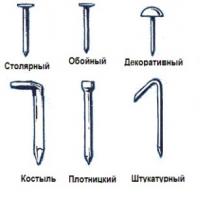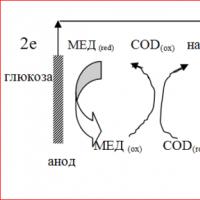How to cut basalt wool. Cutting mineral wool, how and how to cut mineral wool in rolls and slabs. Safety precautions when working with mineral wool
The manufacturer of mineral wool insulation TM "Beltep" makes sure that construction market thermal insulation materials with wide possibilities use. However, practice has shown that the possibilities of mineral wool insulation can become almost limitless if you follow the recommendations listed below when installing it.
How much mineral wool is in one package?
Products of the Beltep trademark are produced in the form of rolled mats or slabs packaged in packs. The number of slabs in a pack directly depends on the thickness of the material. As a rule, one pack weighs 10-70 kilograms and occupies a volume of 0.3-0.4 m3. In order to determine as accurately as possible how many packs of mineral wool insulation are needed, you need to look through the Beltep product catalog, which presents tables with exact calculations for mats or slabs of all sizes and types.
How to cut mineral wool insulation?
It is recommended to cut stone wool insulation with a special long and sharp knife or a hacksaw. When cutting the insulation, you must remember that in order for the heat-insulating material to tightly fill the entire insulated space during installation, you must leave an allowance: for mats - 1-2 cm, for slabs - 0.5 cm. Insulation in the form of rolls is best cut before , as it is deployed. But it is recommended to cut the slabs not in packs, but separately (that is, one at a time).
Does stone wool get wet or not?
In general, stone wool handles water quite well. If drops of water fall on its surface, they simply roll off it, like from the hood of a polished car. However, only on the condition that the water has somewhere to roll off. With prolonged contact with water (for example, if stone wool is in water for several hours in a row), this insulation will get wet, which will most negatively affect the thermal insulation characteristics of stone wool. Therefore, when carrying out work using mineral wool, it is recommended to carefully ensure that the material comes into contact with water as little as possible.
How to properly transport and store mineral wool insulation?
Mineral wool insulation must be transported in cars closed type. At the same time, they must be well secured and reliably protected from exposure to precipitation. Mineral wool mats are very convenient to transport, since they are packed in a compressed state, and, as a result, take up less space. During storage mineral wool must be protected from moisture, so it is recommended to store it in closed, dry areas. Stone wool in the form of slabs for storage is stacked in stacks no more than 2 meters high, and roll insulation is installed in one row in a vertical position. During storage, it is advisable to avoid walking on hard slabs, and walking on soft mineral wool is strictly prohibited, as this can damage the integrity of the thermal insulation material.
Does basalt wool have high fire resistance ratings?
One of the main advantages of basalt wool is its highest fire resistance compared to other types of thermal insulation materials. Basalt wool fibers can withstand temperatures up to 1500 degrees. For comparison, metal begins to melt at a temperature of 1535 degrees.
What safety equipment should be used when working with mineral wool insulation?
Mineral wool is a material that produces dust during the cutting and installation process. Therefore, when working with it, it is recommended:
- wear protective clothing, gloves, safety glasses and a mask covering the nose and mouth;
- ensure good ventilation of the workplace;
- After finishing work with mineral wool insulation, wash your hands thoroughly and remove dust from work clothes.
You can achieve the maximum thermal insulation effect when using mineral wool if:
- for thermal insulation flat roof lay mineral wool slabs in two layers;
- for heat and sound insulation wooden floor use granulated mineral wool;
- use two-layer insulation for thermal insulation of exploited attics;
- accurately trim mineral wool slabs to avoid the occurrence of “cold bridges”;
- use soft mineral wool to insulate frame-type enclosing structures;
- carefully study the information written on the packaging about the properties of materials and optimal conditions for its operation
Today, a method has been developed for producing a special type of insulation - stone wool made from basalt. Twenty years ago, such mineral wool was used exclusively for the needs of the defense industry, but today this insulation is widely used for thermal insulation of any buildings.
Mineral wool does not contain components harmful to the environment such as acrylic and phenol-formaldehyde resins. It consists only of natural binders, therefore it is safe for humans. This thermal insulation material not only perfectly retains heat, but also allows you to create reliable sound insulation of rooms. Basalt mineral wool is becoming more and more popular and has already been tested by time, but people still have a lot of questions regarding technological issues, which we will try to focus on in this article.
How to properly attach mineral wool?
In this case, everything depends on the type of insulation and on the type of structure on which the thermal insulation is mounted. Lightweight grades of mineral wool are installed in frame structures by surprise Rigid mineral wool boards are fastened with special dowels or fixed using special adhesives.

When fastening by surprise, mineral wool is placed very tightly into a wooden frame pre-assembled from slats and bars. The thickness of the frame must correspond to the thickness of the insulation. The interval between the slats is 1.5-2 cm less than the width of the mineral wool, which does not allow the material to slide during operation. The mats are installed starting from the bottom of the structure, and the rolls from the top. In this case, solid pieces are laid first, and free space, for example, near doors or windows, is filled later.
High-density mineral wool is often installed without intermediate/support beams. It is completely inserted behind the frame and pressed against the supporting structure without a gap, after which, for safety, it is fixed with dowels with a wide head, that is, the so-called “dish-shaped” dowels. In such a system, frame elements are placed on top of the insulating layer and press the wool against the wall; in addition, brackets that pass through the mats help to hold the insulation in place.
When using the method of bonded thermal insulation (wet method), frames are not used at all, so adhesives must be used as fastening. In this case, you will have to purchase a dry mixture, but it must be intended for gluing mineral wool insulation. Recently, polyurethane glue in cylinders has become increasingly popular, which allows you to mount dense mineral wool to any base, including wood, metal, and polymer. This technology also involves the use of disc dowels. We discussed in more detail the features of gluing insulation in articles on adhesive compositions and wet insulation of facades.
What is the best way to cut mineral wool?
It is recommended to cut thermal insulation materials from stone wool with a hacksaw or with a sharp long knife specially designed for this purpose, the blade of which is serrated. In any case, the equipment must be well sharpened so that as few fibers are pulled out as possible. Many companies that produce insulation also offer their customers cutting tools: knives about 300 mm long, as well as saws with straight teeth, about 60 cm long. In the absence of special devices for such purposes, kitchen bread knives with fine teeth work well and a wavy edge. Thin soft boards and mats (50 mm) can be cut with a regular mounting knife.
It is best to cut mineral wool produced in rolls before unrolling them. And mineral wool slabs are taken out of the packs and cut one at a time. It should be remembered that when installing thermal insulation, the insulation must fill the entire insulated space very tightly, so allowances should be left before cutting: for slabs - 0.5 cm; and for mats - about 1-2 cm.

Is it true that mineral wool needs to be protected from moisture and wind?
During the operation of insulated buildings, their walls, roofs and other structures should be protected from increased atmospheric humidity and from blowing by strong winds. That's why mineral wool insulation after installation, the outside is covered with a vapor-permeable, moisture- and windproof membrane. This allows you to prevent cold winds and drops of slanting rain from penetrating into the thickness of the wall. In this case, water vapor from the internal space, passing through the walls through diffusion, will be able to exit outside without obstacles.
The undoubted advantage of mineral wool is its vapor permeability, and this property should be used to the maximum. When installing mineral wool thermal insulation materials between load-bearing wall and there is no need to install a vapor barrier with insulation, since such sealing will negatively affect the climate inside the building. The lack of artificial ventilation in this case will lead to increased humidity and the formation of condensation, which, in turn, will cause the formation of mold and fungi.
A vapor barrier film must be used when installing thermal insulation indoors - in this case it is installed on the warm side of the mineral wool. This allows you to protect the insulation from water vapor from the premises. Reinforced polyethylene can be used as a vapor barrier, which is placed between the insulation and the cladding.
If the design allows, between the insulation and exterior decoration A ventilated air gap must be provided. This will help keep the mineral wool dry without reducing the vapor permeability of the building.
What to do if you need to use a 15 or 20 cm layer of wool, but the insulation is supplied 5 or 10 cm thick?
There is nothing complicated here. You need to calculate the required thickness using formulas or using an online calculator (we talked about this in the last article), and then you can easily create an insulating barrier from several layers. In addition, this method allows you to easily eliminate the problem of the formation of cold bridges and blowing of joints. To do this, when installing insulation, the sheets of the outer and inner layers should be shifted relative to each other by 20-30 mm in order to reliably cover the seams.
Is it necessary to use protective equipment? Which?
Mineral wool is considered a safe thermal insulation material, both during operation and during installation. However, when working with this insulation for a long time, it is still better to protect yourself by using personal protective equipment.
Stone wool, compared to glass wool, is much more convenient to use and safer, but you should still be careful when installing it. It is best to work on cool days in overalls made of thick fabric, covering the entire body from contact with mineral wool. It is not recommended to touch this material with bare hands; to protect them, you can use “glazier gloves” - fabric ones with rubber or silicone coating in the palm area. It is also imperative to protect your eyes and scalp. To protect the respiratory system, wear a respirator.

During the installation of stone wool, you should take a break to ventilate the room. Open packs of material must be moved carefully, preventing them from falling, so that microparticles do not escape from them. There should be no children or people not using protective equipment on the construction site during installation of thermal insulation.
Are there any nuances in transportation and storage?
Mineral wool insulation should be stored in whole packages on a flat, dry surface; the height of the stacks should not exceed 2 meters. Stacks are made in enclosed spaces protected from rain and humidity. If mineral wool is stored outdoors, it should be covered with plastic wrap or a tarpaulin.
Mats and insulation boards are transported horizontally in covered trucks. During transportation, the insulation must be protected from mechanical damage and precipitation. During loading/unloading and transportation, the material must not be compressed too much.
You need to unpack mineral wool correctly. To do this, remove the insulation from the packaging immediately before installation, which significantly reduces the risk of damage to the thermal insulation. Insulation packaging can be used on a construction site when laying out mineral wool (when you need to protect it from contamination); it is also suitable as bags for construction waste.
Which cotton wool is better?
There is no definite answer to this question, since in different conditions the best option there will be different types of material.
Basalt soft wool. It is used where high loads are not expected. This material can be used to insulate walls made according to frame technology, as well as for thermal insulation of floors and roofs. The fact that cotton wool is soft does not mean that it will performance characteristics bad. It is simply made from thin fibers, which ensures that the insulation contains many cavities in which air is retained, preventing heat loss.

Mineral wool of medium hardness (density). It is used mainly for insulating ventilated facades, where high-speed air flows are created in the air cavities. It is also used for fire prevention measures, sound and heat insulation of ventilation ducts. Medium-density mineral wool can be installed without problems instead of soft basalt wool, but the cost of thermal insulation will be more expensive.
Hard basalt wool. This insulation is used in places where high loads are possible. For example, where it is planned to insulate walls with reinforcement and plastering (wet method) or when creating certain types of floors.
Cylindrical insulation for pipes. They are usually produced with a diameter of more than 50 mm. They come in the form of slotted pieces that can be unrolled and slipped onto the pipe, or two-piece models that fit together on the pipe.
Foil basalt wool. This thermal insulation material is characterized not only by low heat transfer, but also reflects heat, directing it indoors. Mineral wool can be covered with foil on one or both sides. When laying, the heat insulator is installed with the foil side facing the heat source. The scope of application of this insulation is quite extensive; it is considered a universal material, suitable for all methods and types of thermal insulation.
Stitching cotton wool. It consists of very durable mats, one side of which is lined/reinforced with steel mesh (galvanized, stainless, fire-resistant, acid-resistant). The sheets can be of different thicknesses and can be used to perform various types of thermal insulation. Stitched wool is usually non-flammable, so it can be used to insulate surfaces with elevated temperatures(up to plus 660-700 degrees).
An important technical characteristic of mineral wool is its specific density. Insulation, the density of which is up to 75 kg per cubic meter, is ideal for thermal insulation of surfaces where heavy loads are not expected, for example, for installation in ceilings in attics and roofs. Low-density basalt wool is often used for wrapping pipes in heating plants, boilers and similar components/communications.
Stone wool, whose density is up to 125 kg per cubic meter, holds its shape well and is excellent for insulating ceilings, walls inside buildings, and various vertical structures. It is used for thermal insulation brick walls, as well as surfaces made of foam block or aerated concrete. Mineral wool of this specific density allows not only to insulate a building, but also to ensure its reliable sound insulation.

High-density basalt wool - from 175 to 200 kg per cubic meter is also characterized by increased rigidity, hence the abbreviation in its name (PPZh). Such insulation is used for thermal insulation of initially too cold planes - reinforced concrete, sheet metal. The PPZH-200 brand is also excellent for providing additional protection for residential buildings against fire. Only high-density mineral wool can be installed using wet facade insulation technology.
The construction of any house involves minimizing heat losses. This problem is solved with the help of various types of insulation, among which mineral wool is considered the most popular.
It is reliable and long term service, as it perfectly resists fire and rotting. Get acquainted with the main technical characteristics mineral wool can be found on the website http://www.minvatka.com.
Classification of insulation
Mineral wool is a product that has a fibrous structure. This allows you to achieve high-quality heat and sound insulation.
There are several types of such insulation:
- Glass mineral wool. The product is made from thin threads of molten glass.
- Stone mineral wool. The main component of this substance is melts of various rocks.
- Slag mineral wool is obtained from blast furnace slag.
All types of this insulation emit small particles of fibers and phenol-formaldehyde resins into the air. This can be the cause of various diseases. To minimize the impact of these substances, when laying it, it is isolated using special films.

Cutting tools
Processing mineral wool is not very complicated, which allows you to do all the work yourself. You can cut insulation with several tools:
- Stationery knife. Suitable only for thin sheets of material.
- Hacksaw for metal. With its help you can process wool with a thickness of more than 50 mm.
- Special knives. Outwardly, they largely resemble saws with fine teeth. But at the same time they do not move to the side and are located in one line.
- Bread knife. In the absence of any other tool, this product can also handle mineral wool perfectly.
It should be noted that all blades must be very sharp. This will minimize the pulling of fibers from the mat structure. Experts recommend cutting before the roll is unrolled.
If you need to obtain elements of complex shapes, then it is better to use special cutting machines. They can process cotton wool not only in a straight line, but also in a circle. This is very important, especially in industrial production. If this is a one-time task, then purchasing such a tool will be inappropriate and it is better to use available material.
It is important to consult with a professional before cutting to minimize the cost of sheets used.
Mineral wool is one of the most common insulation materials. And if you decide to insulate the walls of your house with this material yourself, it is very important to know what and how to cut mineral wool. The difficulty is that wool has a fibrous structure, and if it is damaged, all the thermal insulation properties of the material will be reduced, which is extremely undesirable.
How to cut mineral wool
If we talk about industrial scale, then special machine equipment is used to cut this material. But at home you can use the following as a cutting tool:
- mounting knife;
- hacksaw for wood or metal;
- kitchen serrated knife for cutting bread;
- special tools: a knife with a blade made of stainless or carbon steel. The latter type is used for cutting mineral wool different types, characterized by sharpness and good cutting.

Of course, during the cutting process you will also need such additional tools as: a pencil, a ruler, with which you will make markings.
Prohibited use:
- table or stationery knife;
- scissors.

How to cut mineral wool correctly
However, before you start cutting mineral wool, you should create the right conditions. As we have already said, this insulation has a fibrous structure. During the cutting process, various small particles of these fibers get into the air and onto your hands, and to prevent this you should:
- ensure good ventilation in the room where the process itself will take place;
- use special clothing and protective equipment. This can be work overalls, goggles, gloves, and, if necessary, a respirator and mask;
- After finishing work, it is important to thoroughly rinse your hands and face with water.
These measures are so important, as there is a danger of injuring yourself, getting an infection in the eyes, and developing allergies.
Regarding the rules for cutting mineral wool, it is important to cut the insulation across the fibers. And to mineralize the amount of dust in the air during the cutting process, it is worth using tools with a well-sharpened, sharp working edge.
If, for example, you purchased insulation in rolls, then for convenience it is better to immediately cut it right in the roll, and therefore do not rush to unroll it. But the slabs are cut separately.

At the same time, no matter how carefully you cut, no matter how accurately you take measurements, be prepared for the fact that you will have trimmings that can be used for rough work. For example, insulating the walls of a garage or shed. Some people even buy rock wool scraps at a low price, like a budget option insulation: quality, properties are the same, only cheaper.

Thus, you should not throw away the cotton wool scraps from the roll or slab, as they will definitely be useful to you in the household.
A distinctive feature of mineral insulation is its structure consisting of fibers, which must be solid to ensure thermal insulation. In this regard, special attention should be paid to the cutting process. Do not use cardboard or fabric scissors, or ordinary table knives to cut the material. These tools are not intended for such material as they can damage it appearance and worsen beneficial features. It is very useful for novice repairmen and builders to find out what tools are suitable for this task.
Characteristics and properties of the material
Mineral wool is produced in the form of slabs and rollsBefore starting construction or renovation work, the owner of the premises thinks about what criteria should be used to select materials. Currently, the sales range is replete with a variety of canvases that differ from each other in raw materials, price, scope of application, and operating characteristics.
The term “mineral wool” implies three types of materials, namely:
- basalt (stone);
- slag;
- glass wool
Glass wool (made from fiberglass) is characterized by low density and high hygroscopicity. The material does not have moisture resistance properties, and heat resistance should not be expected from it: when a high heating temperature is reached (about 300 degrees), the wool fibers melt, and the material no longer serves as an insulator. Glass wool is sold in rolls.
Glass wool is produced using the blow molding method: an industrial centrifuge creates air flows that go directly into the raw material. Due to the flow of air, fibers appear from the threads, and they can have different lengths, directions and thicknesses.
Mineral wool has low thermal conductivity, allows steam to pass through due to the cells in its structure, and almost does not absorb water. In addition to the base, there are few binding elements in the composition, which allows it to withstand high temperatures. The material is widely used as sound insulation and insulation for various substrates and surfaces. It is produced in sheets that vary in strength.
 Slag wool for room insulation
Slag wool for room insulation Slag wool is the cheapest option for insulation. The material consists of fibers that are waste from blast furnaces; it is not dense and does not have good heat resistance. If you overheat slag wool, it will sinter. Therefore, the material is not suitable for insulating rooms adjacent to heat sources, and is also not recommended for building houses.
The structure of the horizontal layer of any type of mineral wool is created in the direction of the fiber. The formation of vertical sections occurs due to elements that are located chaotically. Each type of material has its own characteristics and external differences.
Are there any nuances in transportation and storage?
Manufacturers recommend storing mineral wool in intact packaging, and it is better if the pack is placed on a flat surface. Each stack of packages should not be higher than 2 meters. Optimal storage conditions are closed rooms that are resistant to moisture. It is not recommended to store insulation outside, but if this happens, then you need to cover it with a tarpaulin or film.
 Cotton wool should only be stored horizontally
Cotton wool should only be stored horizontally When transporting, you should follow the same rules: transport the cotton wool horizontally and in a dry truck bed. It is also necessary to provide the material with protection from mechanical influences and precipitation. When loading and unloading material, do not compress it too much.
Unpacking mineral insulation also requires certain nuances. The material should be removed from the packaging only before starting work, which will minimize various risks associated with damage to the insulation. When laying out the material for cutting, use its packaging as a bedding. Thus, the product will not get dirty. Also, the packaging can be used to collect other waste at a construction site.
What is the best way to cut mineral wool?
To separate webs and rolls, professionals use a special machine. But many people ask the question: “What is the best way to cut mineral wool into slabs at home to save money?”
Important! To cut mineral wool, use a hacksaw for metal or wood.
In everyday life, a mounting knife is used to cut the canvas. This tool has one drawback: due to the small blade, it is difficult for them to cut thick slabs. Therefore, I recommend using a stationery knife only for thin sheets. If this condition is not observed, the canvas may become unusable.
 Cutting mineral wool with a knife
Cutting mineral wool with a knife Tools best suited for cutting mineral insulation:
- A knife whose blade is made of carbon steel. This product is very easy to cut, in addition, its blade sharpens well and quickly. This knife requires careful care to avoid rust. The basic rule of care is to wipe the blade after washing.
- A knife whose blade is made of stainless steel. Each side has teeth of different lengths, so it is very easy to cut mineral insulation of different sizes and thicknesses. The blade quickly sinks into the slab and cuts it efficiently. The sharp tip can even make indirect cuts.
- WITH special machines. Such tools are capable of cutting fabrics along a straight line and along a bend. This feature is highly valued in industry. If you need to cut the cotton wool once, then there is no point in purchasing expensive equipment - the tool that you have in the house will do.
 Cutting mineral wool with a special saw
Cutting mineral wool with a special saw Note! Scissors cannot be used to cut cotton wool.
To cut wool, it is advisable to use a special hacksaw for insulation or metal. It is used for cutting material whose thickness does not exceed 5 cm.
The blades of the tool you use to cut wool should always be well sharpened. In this case, the fibers from the cotton wool will be pulled out minimally. Manufacturers advise cutting the cotton wool before unrolling the roll.
How to cut mineral wool?
The material has a fibrous structure, so small particles of glass wool fly around during cutting. Therefore, contact of hazardous elements with the skin and respiratory tract should be prevented.
Before cutting the insulation, the following conditions must be observed:
- The room should be well ventilated.
- During the work process, the use of protective equipment and special clothing is mandatory. We are talking about gloves, a respirator, a mask, overalls and safety glasses.
- When the material is cut, it is recommended to wash your face and hands under cold water.
To ensure that as few glass wool particles as possible form in the air, you should use a well-sharpened tool.
 The insulation should be cut without unrolling the roll.
The insulation should be cut without unrolling the roll. Advice! It is best to cut the material crosswise.
To get strips of cotton wool that are the same width, you should cut the material directly in the roll. If the wool is in the form of slabs, then you need to cut them one at a time.
In order for the strips of cotton wool cut independently at home to turn out smooth and identical, they should be divided clearly according to the marks. You can also use a ruler as a cutting line.
When cutting, leave allowances along the edges. If it is a roll, then the indicator should be 0.5 cm, and if it is a slab, then 2 cm. This cutting feature is necessary so that the mineral wool element completely fills the required space.
Let us remind you that mineral wool slabs are cut one at a time, and the material is cut in rolls without unrolling.
What are leftover mineral wool useful for?
There is no need to throw away the remaining insulation: they will also be useful for the pantry or utility room. Many people strive for budget insulation, so they use scraps and leftover material.
Waste mineral wool can be recycled for later use. In this case, special machines are used.
In order for the process of insulating a room to proceed properly, you should know what you need to use to cut mineral wool and how to do it. If you comply simple rules When working with this insulation, you can achieve good results.
 Are there mites in Pitsunda? Ticks in Abkhazia. Pitsunda pine grove
Are there mites in Pitsunda? Ticks in Abkhazia. Pitsunda pine grove Red viburnum (Viburnum opulus L
Red viburnum (Viburnum opulus L Nail Making Business How to Make Copper Nails
Nail Making Business How to Make Copper Nails Stone brazier: material features and manufacturing options
Stone brazier: material features and manufacturing options Blackroot medicinal cultivation
Blackroot medicinal cultivation Fuel cells: a glimpse into the future
Fuel cells: a glimpse into the future Houses with a hipped roof projects
Houses with a hipped roof projects